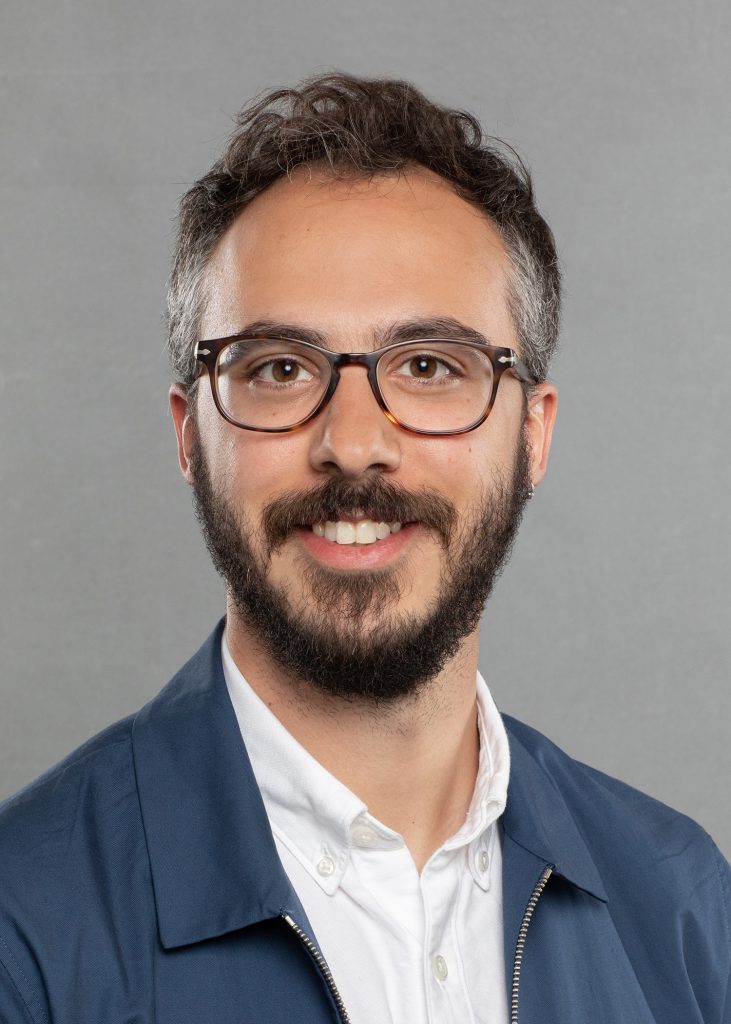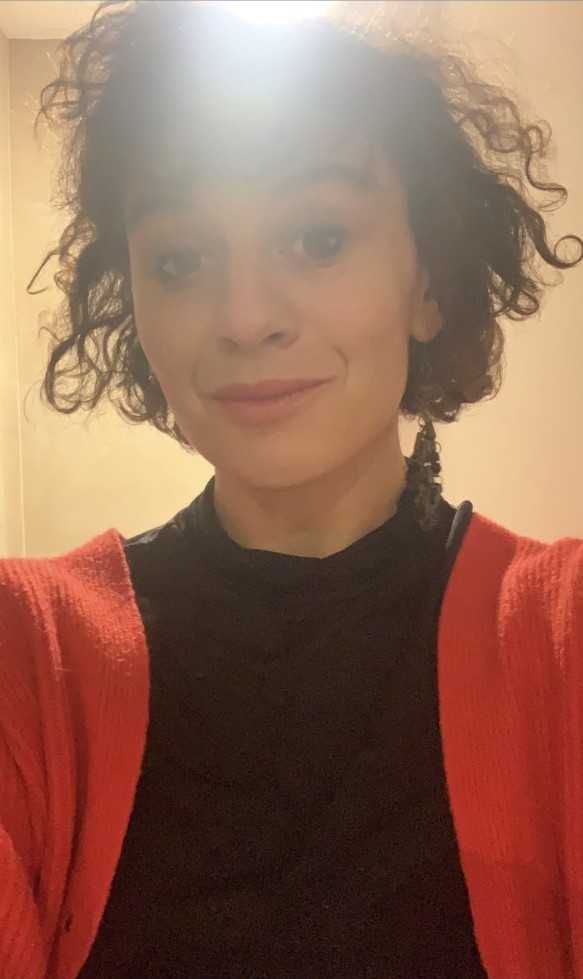Research Fellows
Gregorio Astengo, Visting Research Fellow (2023-2024)
Printing for the ‘City-Builder’: London Real Estate and the Emergence of the Building Guide (1650-1720)
The second half of the 17th-century was a period of significant transformation in the building world of London: a combination of political instability, demographic and urban growth, social change and professional reconfiguration, produced profound shifts in the building sector, which started to move towards a national industry. The Great Fire of 1666 precipitated this process by quickly opening up a vast market of speculative housing reconstruction and urban expansion, generating new building typologies, like the Georgian terrace house, as well as novel professional figures, like the real estate developer. The project Printing for the ‘City-Builder’addresses the ways in which knowledge on construction practices came to be codified through a new form of literature, the building guide. This type of book, which became popular from around 1650 onwards, collected and synthesised for the first time basic instructions for potential speculators: techniques for surveying, lists with prizes and sizes of building material, wages for contractors and labourers, charts for interest rates, values for rents and leases, and sometimes ready-made building plans. Unlike the architectural treatise or even the building manual, the London building guide was dedicated to neither design principles nor construction techniques, but rather to the practical processes of what today we may call building management. The content of these books, like The Purchaser’s Pattern (1653), The City and Country Purchaser and Builder (1667) and A Platform for Purchasers, a Guide to Builders, a Mate for Measurers (1668), was formulated by the diffusion of speculative housing construction as an informal and still changing set of practices in 17th and early 18th-century London. In turn, the production of the building guide aimed at theorising such practices and codifying generalisable notions on real estate investments. The building guide therefore represents a key source for understanding and making sense of the processes of production of the built environment from the lesser-known perspective of early modern building developers.

Gregorio Astengo is an architect and historian. He joined Birkbeck in January 2023 as a Postdoc Mobility Fellow of the Swiss National Science Foundation. He holds an MA from Turin’s Polytechnic (2012), a Postgraduate Certificate in Advanced Architectural Research from the Bartlett School of Architecture, UCL (2014) and PhD from the Bartlett (2019), funded by the London Arts and Humanities Partnership. Gregorio was teaching assistant at UCL and Queen Mary (University of London), adjunct professor at Syracuse University London, lecturer at the New College of the Humanities and Postdoctoral researcher at ETH Zurich. His main research interests are the impact of real estate on architectural history and the production of technical literature for architecture.
Luisa Lorenza Corna, Honorary Research Fellow
Towards a Spatial Critique of Student Experience
BA/Leverhulme Small Research Grant recipient
‘Student experience’ has become a ubiquitous term in the discourse of contemporary universities, yet its meaning remains opaque. In its most immediate (and positive) sense it denotes a holistic approach to education, one which spans from intellectual development to social and emotional life. In practice, however, it indicates customer satisfaction, which in turn is reflected back at universities via their league table position and scores in student surveys.
Taking the lead from the contemporary usage of this term, my research fellowship retraces its permutations and its relationship to space. ‘Space’ here signifies both the physical configuration and location of university sites, as well as the panoply of social relations of production and reproduction adding up to educational processes. A key reference for my research will be the writings of architect and pedagogue Giancarlo De Carlo. I will consider his critique of institutions in the aftermath of ‘68, his analyses of the impossibility of educational containment, and his attempt at establishing alternative pedagogical projects permeating the entire city. Bringing his lessons to bear upon the present, I’ll advance a critique of the specific ways in which contemporary universities have been compressing space and experience, despite the proliferation of educational sites and the promotion of lifelong learning.

Luisa Lorenza Corna teaches at Middlesex University. She’s also a visiting lecturer at the master of Critical Theory of the University of Milan/Bicocca. Her main concern is the relationship between politics, art and architectural theory. Since completing her Ph.D. her researched has developed along three main axes: Marxism and theories of the city, with a focus on the post-war Italian context; art and architectural historiographies; and the influence of feminist epistemologies on histories and theories of art. She has written for various journals, amongst which, Parallax, Historical Materialism, Radical Philosophy, Art Monthly, Texte Zur Kunst and Jacobin magazine. She is now completing, with Jamila Mascat, an anthology of Carla Lonzi’s art historical and feminist writings for Seagull Books. She’s also working on her first monograph tentatively titled ‘Fugitive Lives’, which examines the theme of leaving the art/architectural world, from the point of view of the critic.
—
Miloš Kosec, Associate Research Fellow (2020-22)
Barriers without walls: Spatialisation of the cordon sanitaire
Cordon sanitaire is both an impenetrable and intangible wall; it exists for a relatively short time but has far-reaching consequences. The political implications of both historical and contemporary cordon sanitaires far exceed the duration of the epidemics: they are often used as a precursor or a pilot project for new modes of policing and surveillance of bodies in space. This extends the relevance of the research beyond the limited time of medical crises towards the biopolitical potential of cordon sanitaires, including the concepts such as state of exception, border walls, social distancing, immigration politics and weaponized cities. Today, more than ever, a critical and historically informed academic discourse will be an essential part of a vigilant public resistance towards the misuse of short-term epidemic measures. The intertwined and often untransparent relation between public health, safety, military and political governance of space, have defined the history of cordon sanitaire from its very inception. This is why the research into the ways increased surveillance and containment measures are spatialized and enforced in 2020-2022 needs to be understood in conjunction with the rich and diverse medical, architectural and political history of the cordon sanitaire.
Research project “Barriers without walls: Spatialisation of the cordon sanitaire” is a joint research project of Professor Leslie Topp and Miloš Kosec, formed with the help of the seed funding from the Research Innovation Fund at Birkbeck (2020-2021). In 2021-2022, Professor Topp and Kosec plan to upgrade their research with a joint article and public discussion.

Miloš Kosec is Associate Research Fellow in the School of Arts (Department of History of Art). He completed his PhD in 2019 at Birkbeck, University of London, with a thesis »Passivism: Activism and Passivity in Contemporary Architecture«. His research is focused on the questions of contemporary architectural agency, the notion of passivity, and the intangible strategies in transforming movement in and uses of space. Currently, Miloš and professor Leslie Topp are involved in a joint research project focused on Cordon sanitaire.
Miloš is also an architect, writer and curator. He obtained his MA in architecture at the Faculty of Architecture of Ljubljana University. His Master’s thesis »Ruin as an Architectural Object« was published as a book in 2013. Miloš is also a practicing architect and landscape designer with a number of landscape realisations. In 2018, he was one of the authors of the Slovene pavilion at the Venice Architecture Biennial. He is a member of the Nonument Group. In 2021, he joined the Museum of Architecture and Design in Ljubljana as a curator for architecture.
Related Publications:
Infection and the Politics of Space: The Cordon Sanitaire, Miloš Kosec and Leslie Topp
Fenced Off, PLATFORM – A digital forum for conversations about buildings, spaces, and landscapes, Miloš Kosec and Leslie Topp


